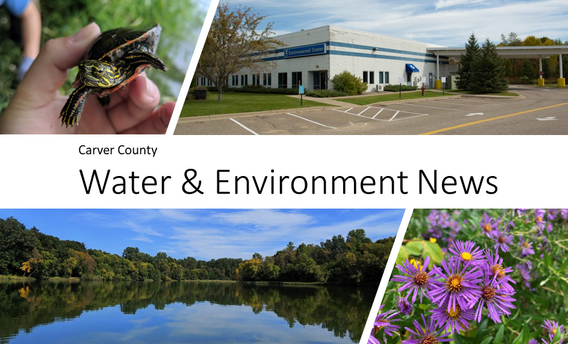 January 2024
Once the shreds of wrapping paper have been discarded and the leftovers of holiday feasts have been consumed, the focus turns to getting rid of the Christmas tree. Please, DO NOT throw your real Christmas Tree in the trash. Christmas Trees are biodegradable, which means they can be easily reused or recycled for mulch and other purposes.
After Christmas, Carver County residents have options. Visit the Environmental Services Christmas tree webpage for information about how and where to best dispose of your tree. The Environmental Center in Chaska will also be accepting Christmas trees for recycling at no charge through the end of February. Trees must be free of all decorations, lights and flocking. Please note that other yard waste (grass and leaves), brush and Christmas wreaths will not be accepted.
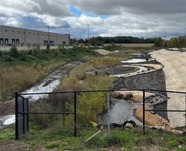 |
|
Completed the Chaska Creek Re-meander Project. A 1,000 linear foot ditched section of West Chaska Creek was reconstructed to a more natural channel with 5 meanders and a floodplain. The project will increase flood storage, reduce erosion downstream, and enhance wildlife habitat. Funding for the project came from a BWSR Grant, the Lower Minnesota Watershed District and the County WMO. |
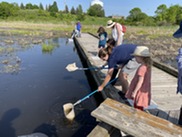 |
|
Staff launched a new education program in partnership with the MN Landscape Arboretum. The Evening with the Bugs program provided an opportunity for youth and families to learn about aquatic bugs and what they tell us about the health of our lakes, rivers, and wetlands. Participants got to get up close with dragonfly nymphs, water scorpions, backswimmers, and a host of other critters. |
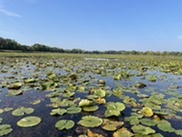 |
|
Staff completed first vegetation surveys on some area lakes with surprising findings. Myers Lake recorded the highest floristic quality index (quality of plants in the plant community) of all sampled lakes in Carver County. It also had one very unique species, Nitella furcata, a rare species of stonewort that has not been reported this far south in Minnesota. |
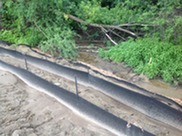 |
|
Permitting staff worked with 100+ development sites to protect area waters during continued rapid County growth. |
Questions about what happens to recycling after it leaves our homes have been increasing over the years. Six metro counties are working together to restore trust in Minnesota's recycling system with this united message: In Minnesota, recycling exists.
Your recycled items become new products, locally and regionally, when you recycle right. Minnesota is home to many recycling facilities that collect, sort, process and manufacture items made from the bottles, boxes and other containers residents put in their home recycling bins every day.
Local efforts to recycle and reduce waste save energy, protect resources and support about 78,000 jobs in the state. Annually, the Twin Cities metro area recycles an average of 900,000 tons of paper and cardboard, metal, glass and plastic – that’s the weight of about four large cruise ships!
Minnesotans can be proud that recycling works here.
Learn more at RecyclingExists.com
Our online projects map tracks multiple projects that protect or restore lakes, rivers and wetlands and keep them healthy. Check it out to take a look at what our water management organization has been working on and where.
In every city and county, policies are adopted to regulate how land is used. Commonly called zoning, this area of government defines land uses, guides development, defines the population density of an area, and more. Areas are zoned for different uses such as residential, business, agricultural, parks and open space, and more. A zoning code is a set of standards that guide what can or cannot be constructed in an area, how large it can be, how much space is needed around structures (known as a setback), and more.
What is a variance?
But perhaps your property’s shape makes it difficult to expand your existing house, or you want to build a garage that intrudes a foot into the required setback so that it doesn’t meet code requirements. When a project doesn’t fit within the existing zoning code requirements, a person must apply for and obtain a variance. When someone applies for a variance, they are requesting an exemption to a zoning code standard.
A variance is approved by the city or county where it is located. In Carver County, cities manage their own variance requests. Requests within townships are managed by the Carver County Land Management Department.
Carver County Environmental Services is updating the County Solid Waste Management Plan which outlines how we manage waste. We would like to hear from citizens on additional ideas and services you’d like. Residential input helps us make informed decisions about household waste (garbage), recycling, and organics. You are an important part of the planning process. We want the system to meet your needs, be clear, convenient and maximize environmental benefit.
Carver County is a proud member of Reuse Minnesota, an organization designed to support the resale, repair, and rental economy. Reuse Minnesota is hosting a business development training for those interested in starting or expanding a resale business, such as a thrift or secondhand store. Participants who complete both training sessions and follow-up survey will receive a $100 stipend.
Training dates and location
Sunday March 3, 2024, or Sunday March 10, 2024
North Regional Library 1315 Lowry Ave. N. Minneapolis, MN
Training is provided by Cat Polivoda, owner of the successful Cake Plus-Size Resale, and will cover topics such as business basics of resale, product procurement, and growth and expansion. Participants will gain a solid foundation for starting a resale-based business with additional resources provided for next steps.
This training is made possible through funding provided by the Minnesota Environment and Natural Resources Trust Fund as recommended by the Legislative-Citizen Commission on Minnesota Resources.

The Courthouse Lake trout opener is coming up on Saturday, January 13, 2024. This opener attracts many people.
If you plan to attend, please use caution.
Even with the cooler temperatures and the dusting of snow, waterfowl are still present on the lake. The ice is unsafe and will pose a danger for anyone who tries to walk out.
|
|
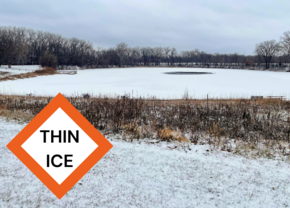 |
|